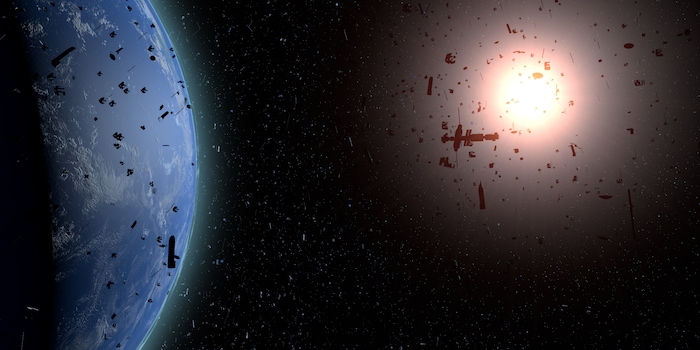
Solar storms cause satellites to crash more quickly
When the sun is particularly active, more satellites enter the atmosphere. This has been proven by researchers using more than 500 satellites. With this knowledge, the orbital drag can be better calculated.
In February 2022, 40 Starlink satellites re-entered the Earth's atmosphere unscheduled shortly after launch, even before they had reached their orbit at around 550 kilometres. One of the reasons: The satellites were released into space during a solar storm. The sun emits a particularly large number of charged particles. If they interact with the Earth's magnetic field, the atmosphere heats up locally at altitudes of 80 to 600 kilometres and becomes denser. Satellites experience this as an increased resistance force acting on them.
This correlation has so far been proven for individual satellites. Now, researchers from the University of Maryland and the NASA Goddard Space Flight Center have confirmed the results for the first time using a large number of satellites. They analysed data from 523 satellites that entered the Earth's atmosphere between 2020 and 2024. The vast majority of these belong to the Starlink constellation. The study period coincides with solar cycle 25, a phase of the eleven-year cycle in which the sun emits particularly high levels of ionising radiation.
Analysing the altitudes and speeds at which the satellites were travelling in orbit allowed the researchers to draw only one conclusion: high geomagnetic activity forces the satellites back into the atmosphere more quickly. In other words, the times of the actual and predicted re-entries diverge more and more as geomagnetic activity increases.
These results, together with a finding from May 2024, are of practical use according to the researchers. During the so-called Mother's Day storm, solar activity was extremely high, which caused almost half of the 10,000 spacecraft in low Earth orbit - mainly Starlink satellites - to correct their position. It is considered the largest satellite migration in history. In the future, such events could be used to improve models of orbital drag in times of solar storms.
Spectrum of Science
We are a partner of Spektrum der Wisenschaft and want to make well-founded information more accessible to you. Follow Spektrum der Wissenschaft if you like the articles.
Originalartikel auf Spektrum.de
Experts from science and research report on the latest findings in their fields – competent, authentic and comprehensible.
From the latest iPhone to the return of 80s fashion. The editorial team will help you make sense of it all.
Show all